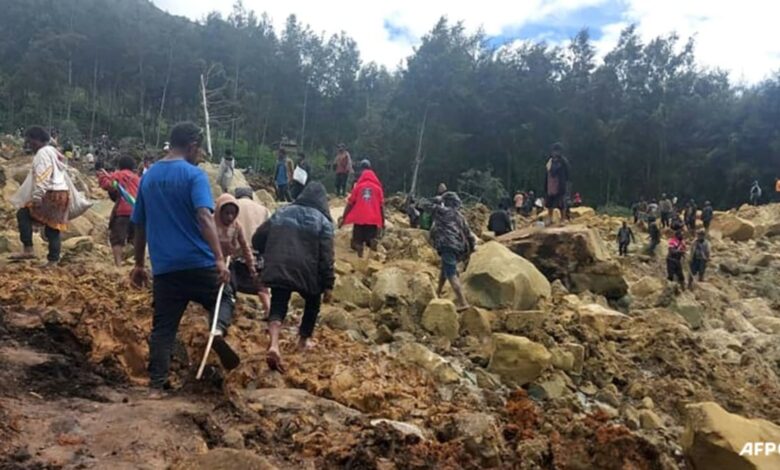UN raises Papua New Guinea landslide death toll estimate to 670

“DESTRUCTION IS MASSIVE”
“The situation is really horrible, people are in shock and traumatised,” he told AFP.
“The land is still sliding. You can see rocks falling down from the mountain.”
More than 1,000 people have been displaced by the catastrophe, aid agencies estimated, with food gardens and water supplies almost completely wiped out.
Aid agencies and local leaders initially feared between 100 to 300 people had perished underneath the mud and rubble spanning almost four football fields in length.
But the death toll grew after local leaders and disaster workers realised official figures underestimated the population, Aktoprak said.
Five bodies and the leg of a sixth had been pulled from the debris by Saturday night.
This number is expected to start climbing in the coming days as diggers and other heavy machinery speed up the painstaking excavations.
“The destruction is massive,” Nickson Pakea, president of the nearby chamber of commerce, told AFP on Saturday.
“They need machinery and other equipment to uncover these bodies. We are facing a big problem.”
TRIBAL VIOLENCE
Located on the side of densely forested Mount Mungalo, the village was home to a transient population that could swell to more than 4,000 people.
It served as a trading post for the alluvial miners who panned for gold in the highlands region.
“It’s a centre of the community. People come from near and far to do their alluvial mining, and then they come to this place to trade,” Pakea said.
A difficult journey to make at the best of times, vehicle access has been further complicated by a burst of tribal violence along the only route not blocked by the slip.
Aktoprak said the violence was “not related to the landslide”.
Papua New Guinea’s military had stepped in to provide a “security escort” to aid convoys, he added.
“In one day alone, a total of eight persons had been killed, five business stores and 30 houses had been burnt down,” Aktoprak said of the escalating tribal feud.
At some points, the landslide – a mix of car-sized boulders, uprooted trees and churned-up earth – was thought to be 8m deep.
Locals said it may have been triggered by heavy rains that have saturated the region in recent weeks.
Papua New Guinea has one of the wettest climates in the world, according to the World Bank, with the heaviest downpours concentrated in the country’s humid highland interior.
Research has found shifting rainfall patterns linked to climate change could exacerbate the risk of landslides.
This year has seen intense rainfall and flooding across Papua New Guinea.





